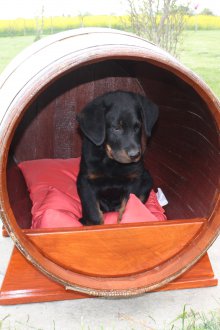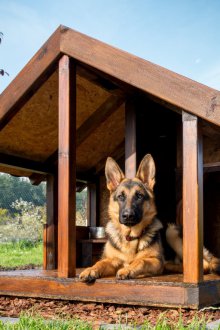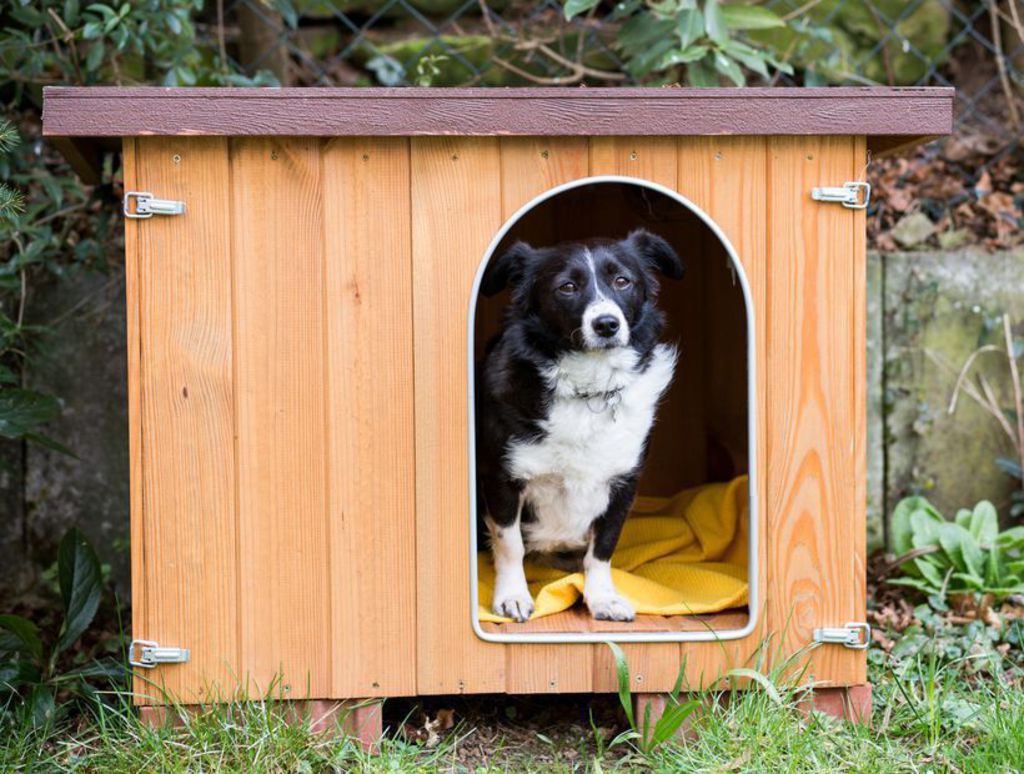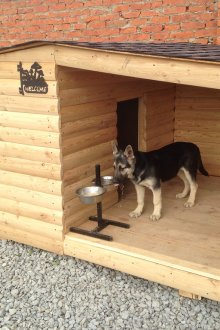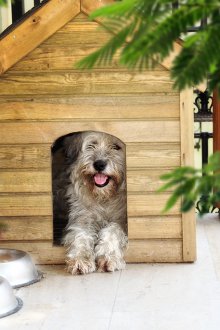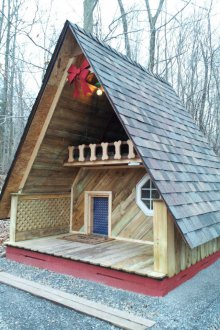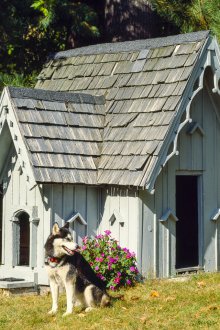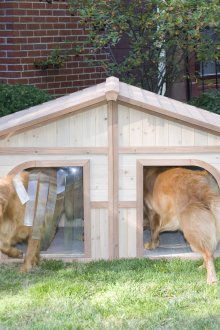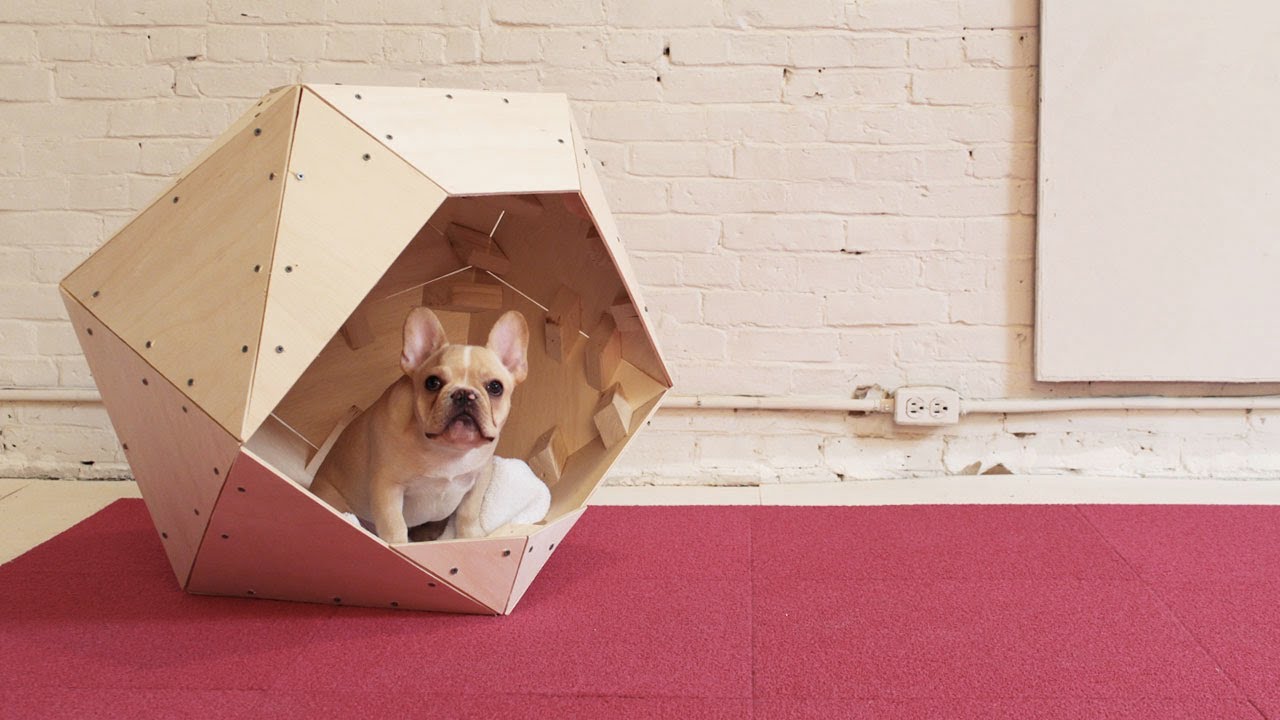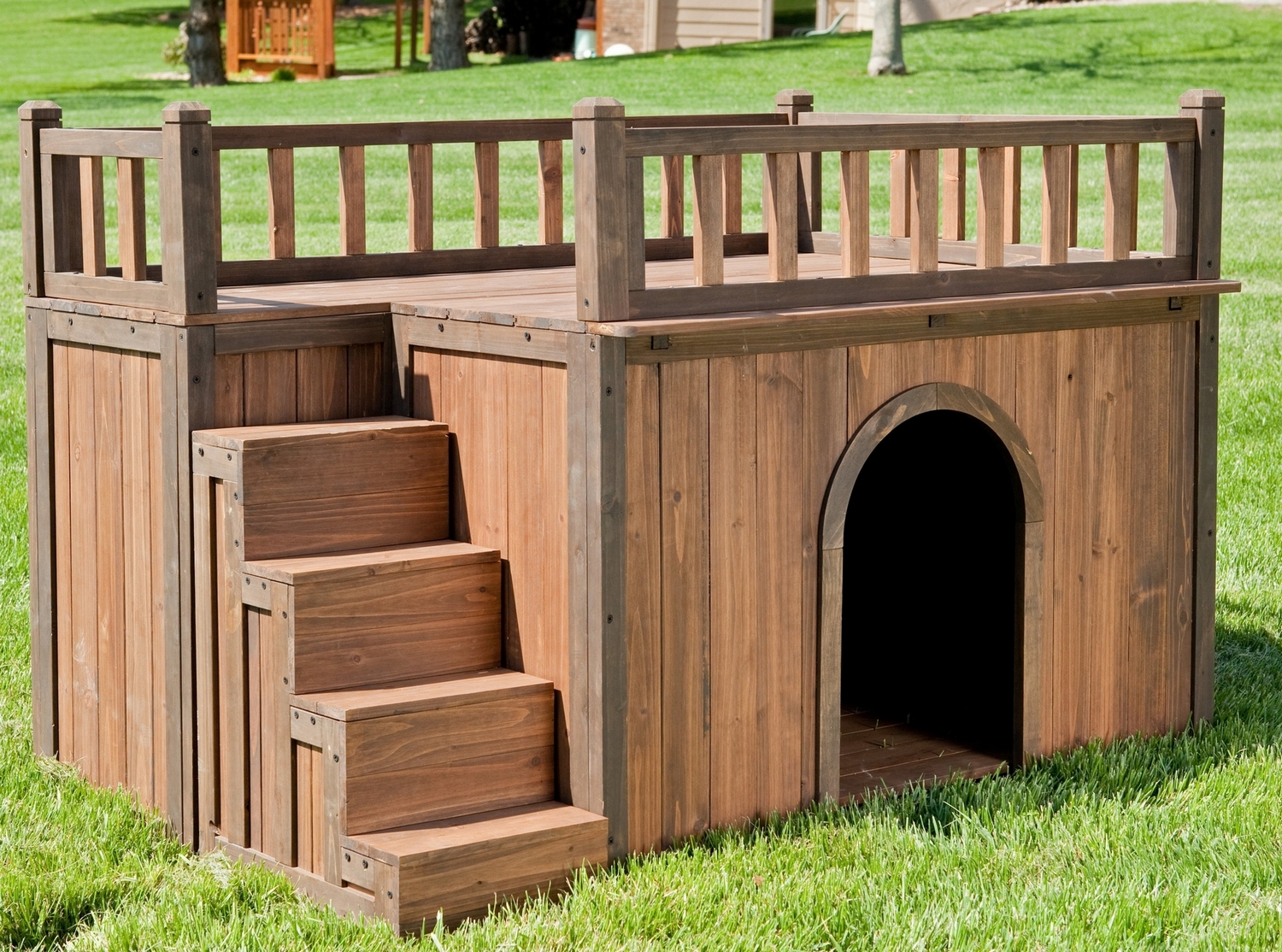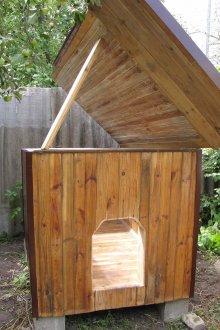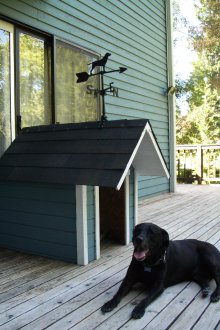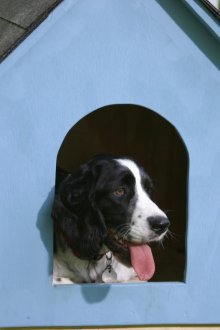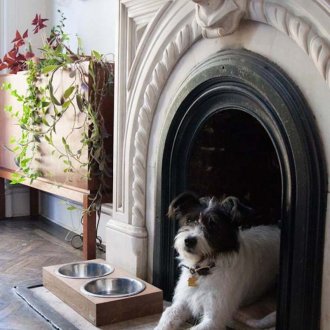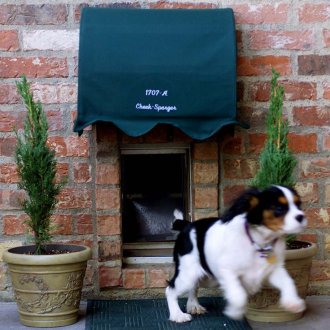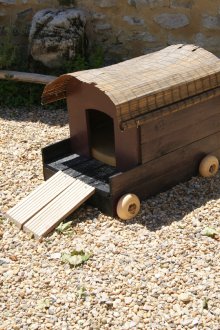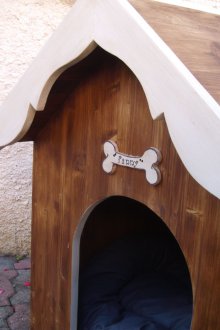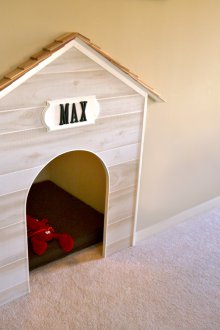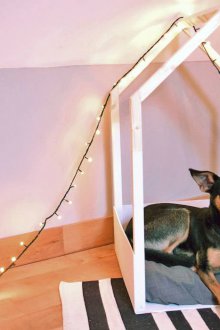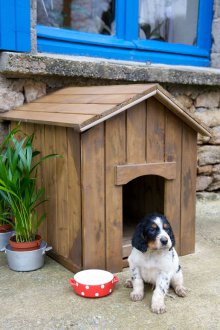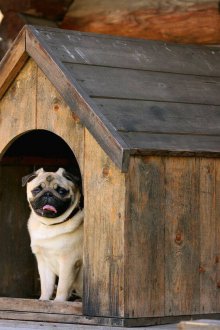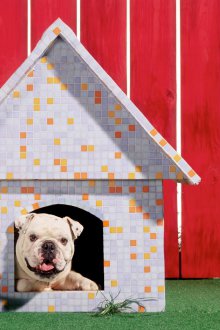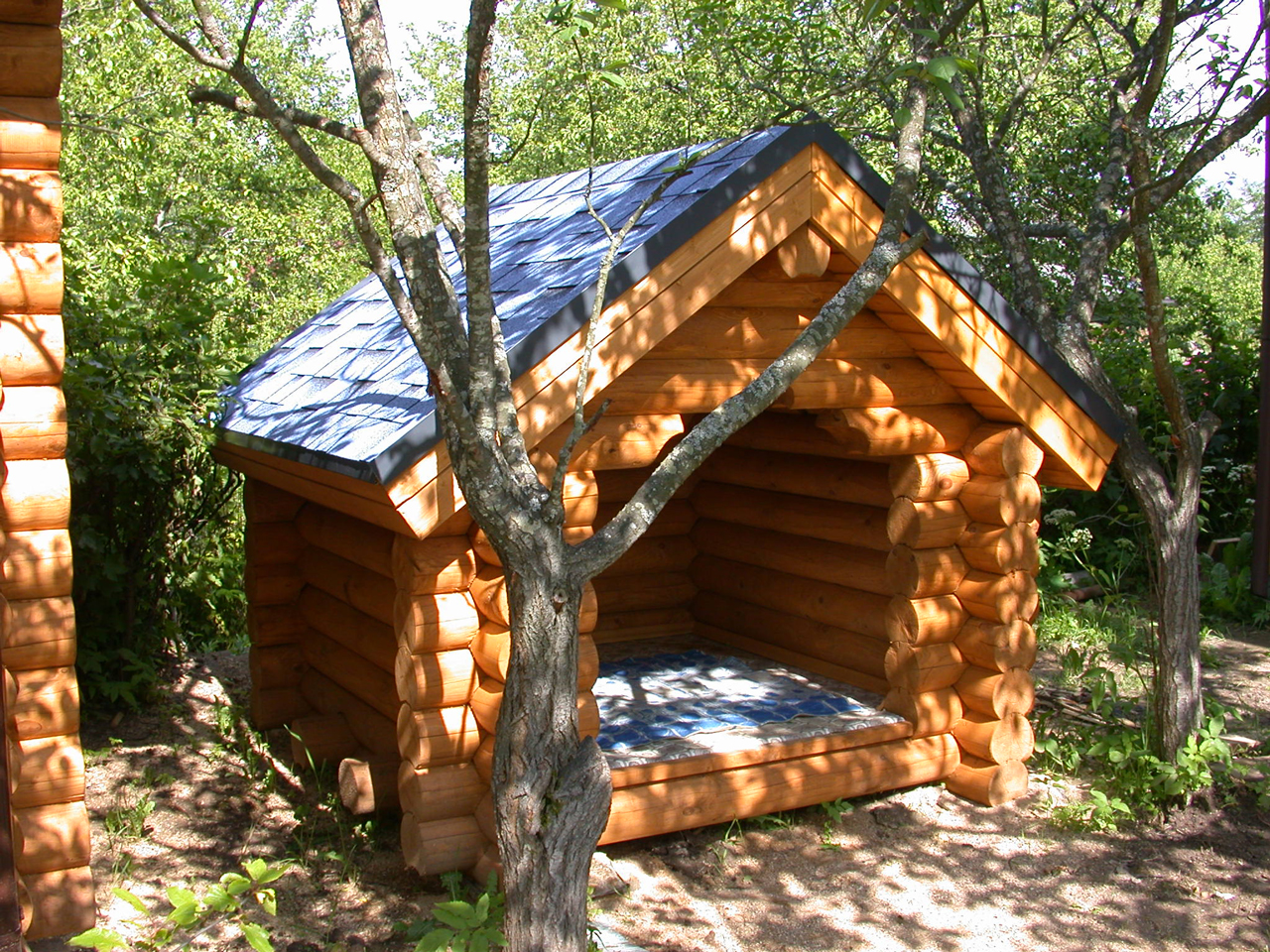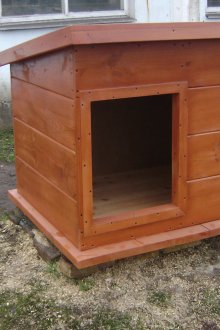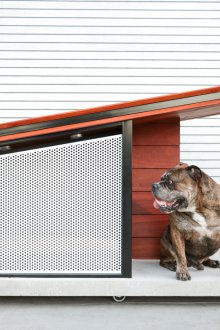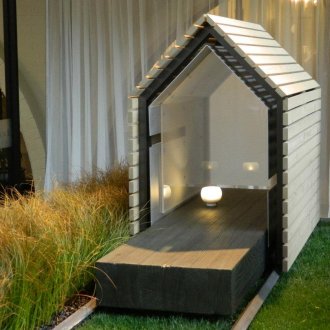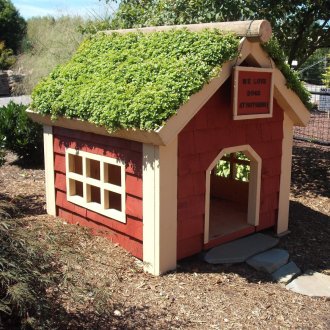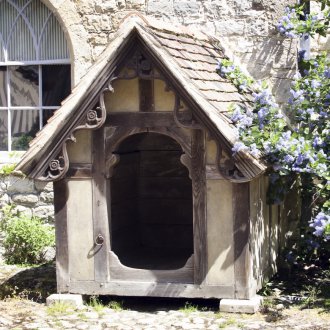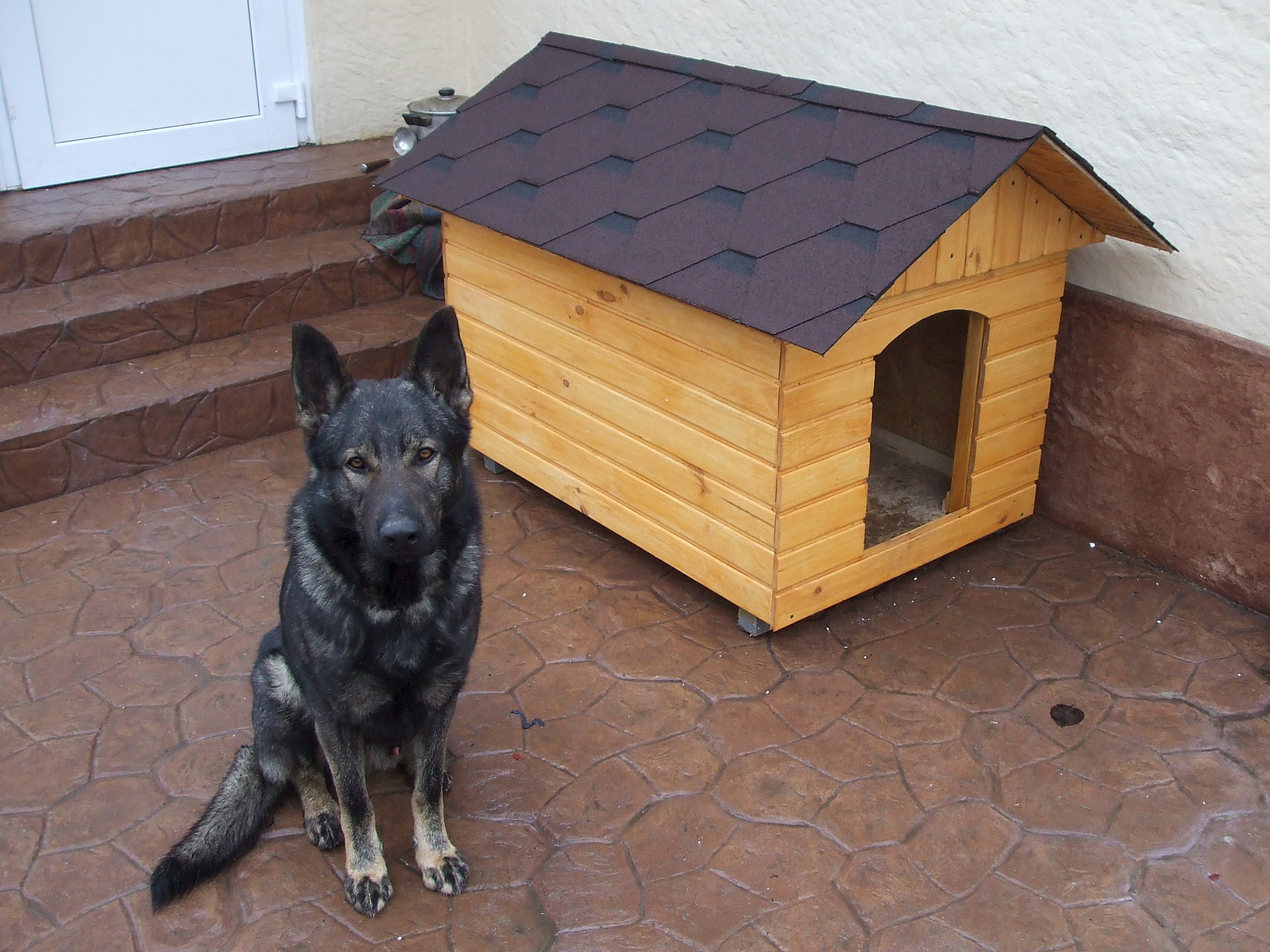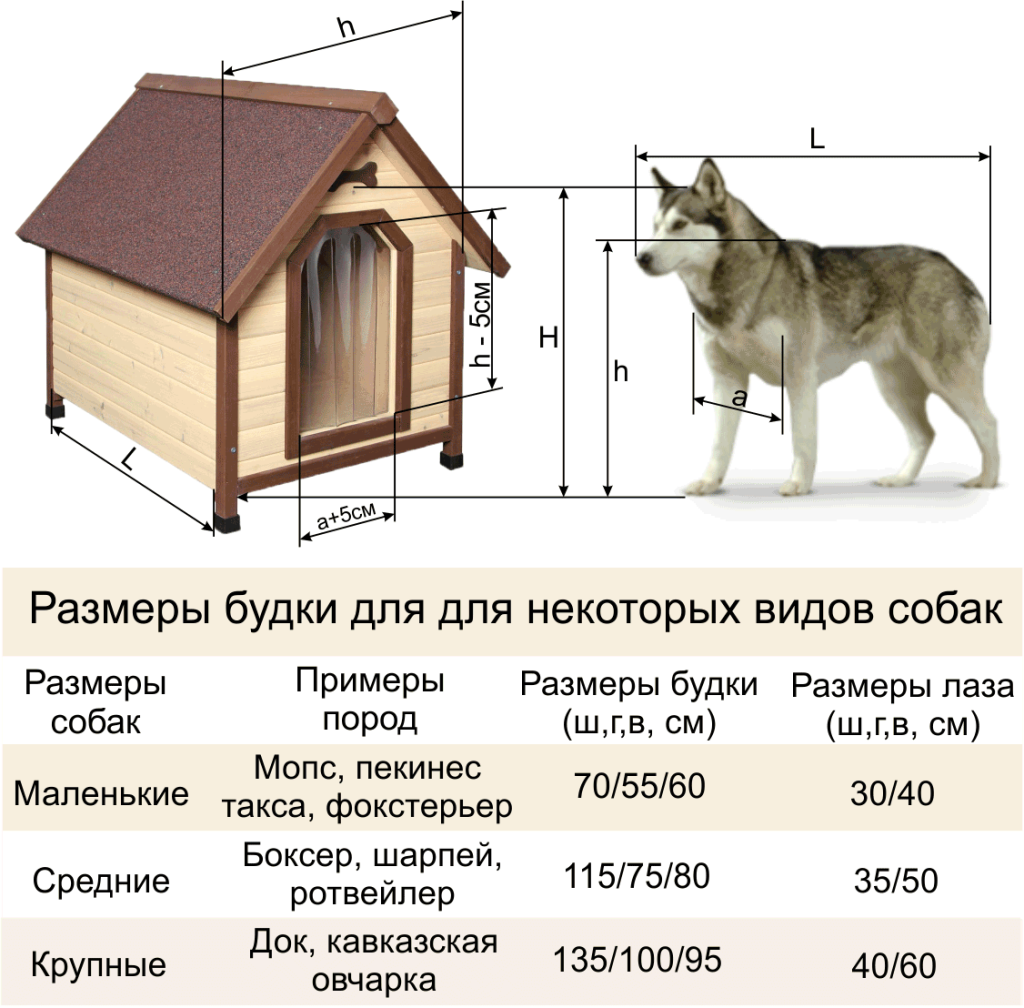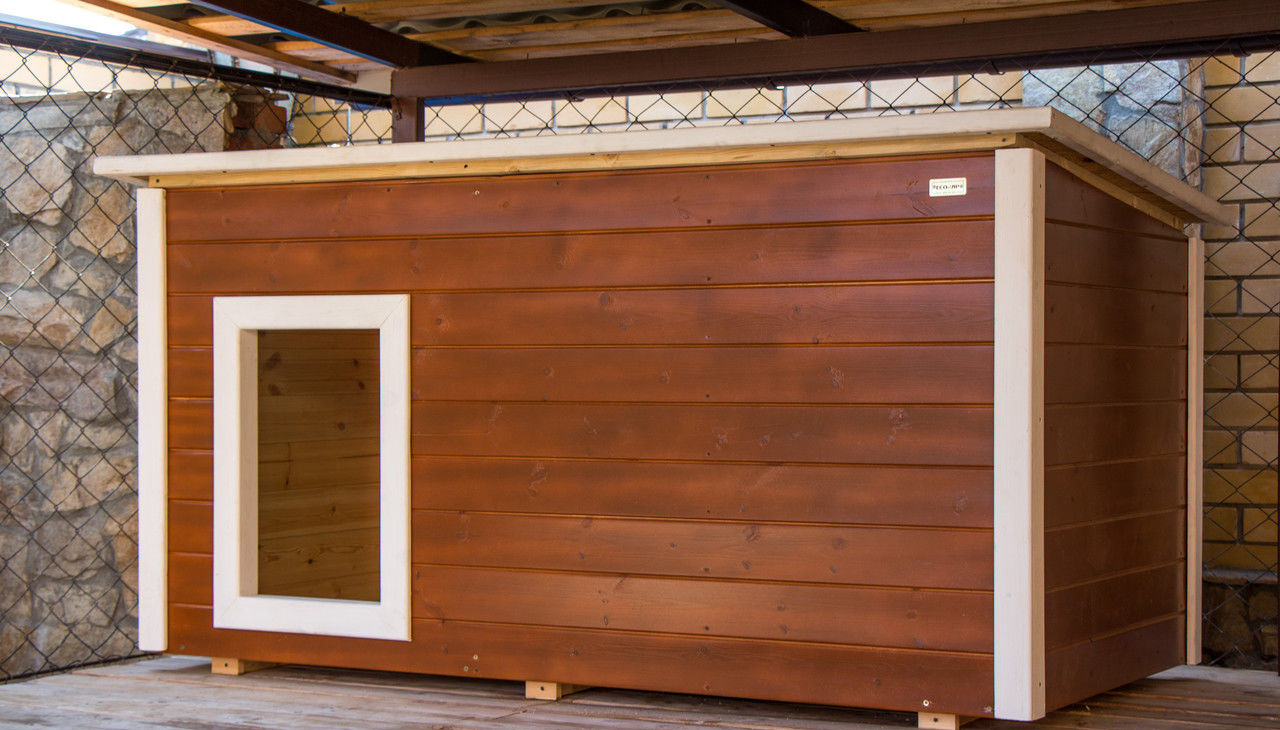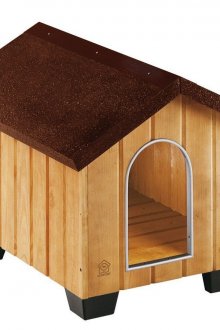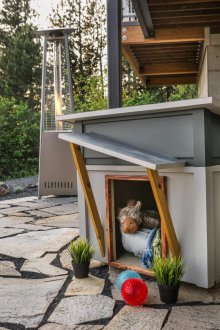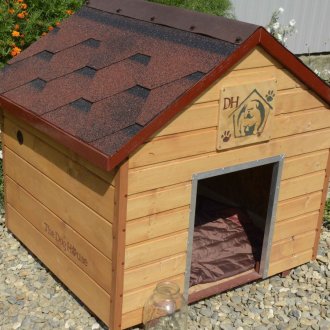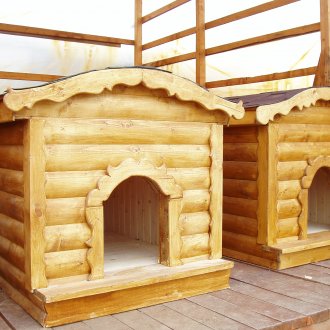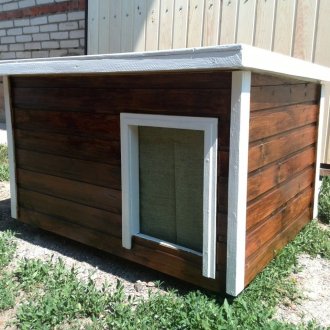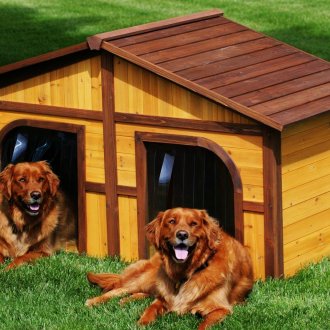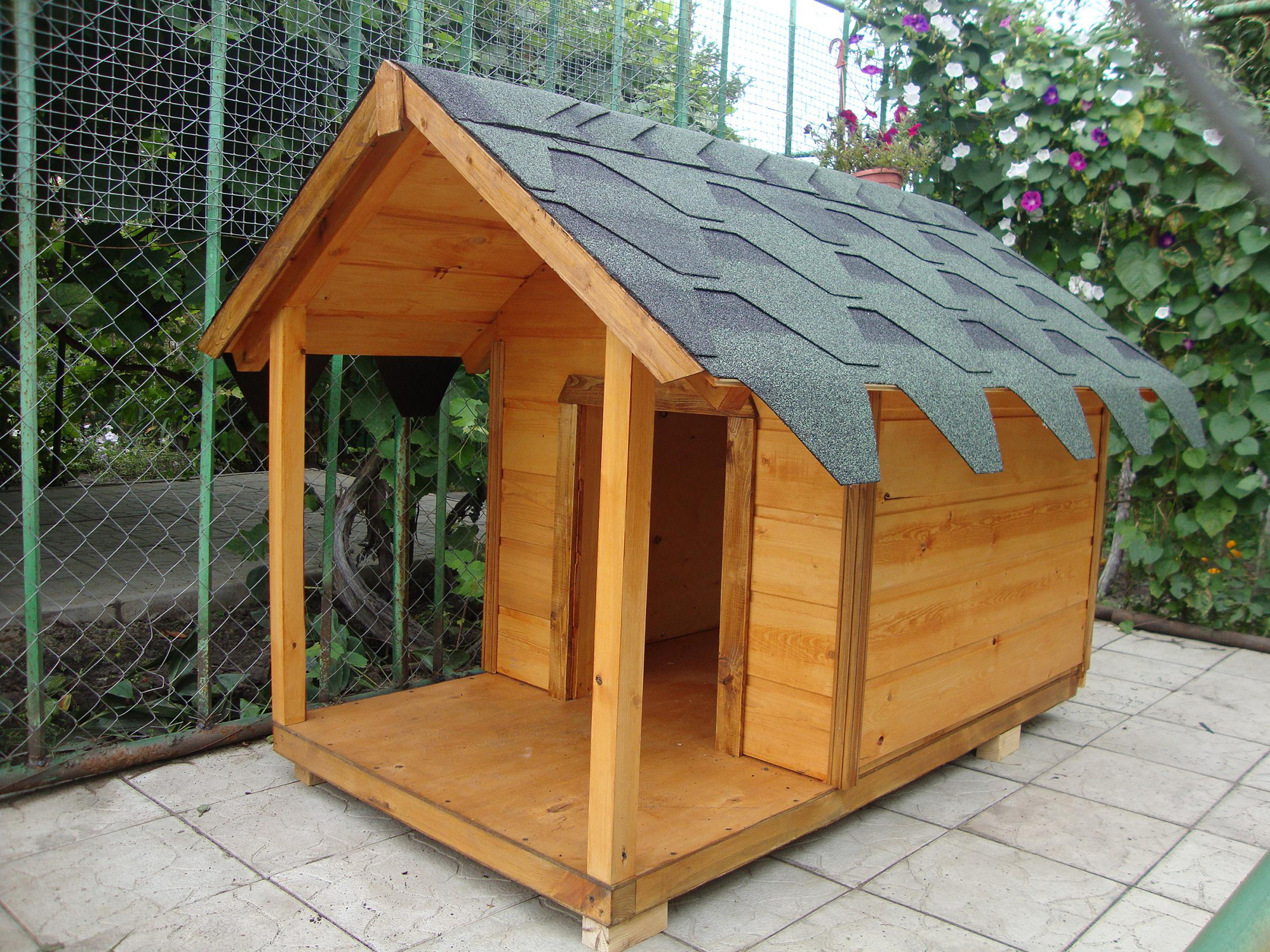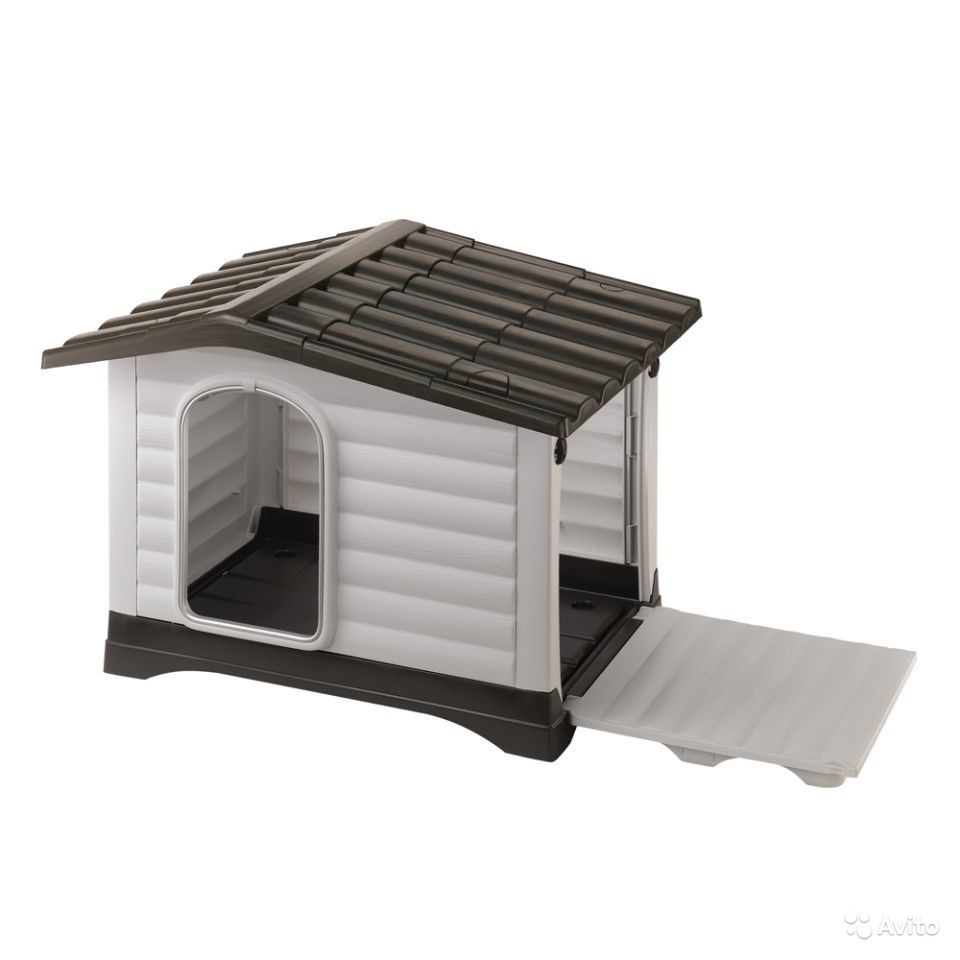Dog booth (53 photos): required materials and beautiful designs
Content
In private homes and summer cottages, owners rarely keep small and large dogs of various breeds in residential premises. Even house dogs go to the yard. And it's not that dog bowls spoil the design of the room. Animals themselves with great pleasure live in the fresh air, where there is sun and soft grass. But the dog needs its own little house.
A dog house is a protection from the cold, wind, precipitation and the scorching sun. This is a place where the beast can rest, sleep peacefully. Sometimes booths are built to make aviaries more convenient. In order for a kennel to become a real home for your animal, it must be tailored to the needs of the dog. The quality of the booth is of considerable importance, because the house for the dog, crumbling from the blow of the wind, will bring the owner a lot of trouble. Of course, today you can always buy a ready-made doghouse in the appropriate store. There are other options: hiring specialists, buying from hand. However, even a person with minimal construction skills is able to create a kennel project and independently make it.
Choosing a place to build a kennel
Consider the following factors:
- a windy place is completely unsuitable for placing a kennel, however you can always move a portable house for dogs;
- if the booth is not placed in aviaries, then it is best to choose a dry and moderately sunny medium-sized platform located on a hill;
- it is better to make a booth next to a shaded place where your pet can relax on hot days;
- Choose a spacious place, not the gap between the two sheds;
- it is best to place a booth near the entrance to a residential building (on the south side);
- the dog box should be so that the dog sees the entrance to the courtyard and the house, and also can observe the route of movement of people.
Design
A dog house can have almost any shape - the project depends on your imagination and capabilities. However, you should consider the structure of the kennel and choose the materials, first of all, taking into account comfort from the point of view of the dog. Do not proceed from your understanding of comfort and convenience: your pet hardly needs a chic design and a magnificent two-story villa with a dozen rooms, artificial lighting and vinyl siding. But a simple rectangular dog house with a convenient hole will probably please the pet. Although the options may be different: unusual booths are becoming more popular every year.
A booth with a vestibule is a little more time-consuming project than an ordinary rectangular doghouse, however such a house for a dog will be an excellent protection against cold and wind. If you additionally insulate the vestibule, and also hang a curtain of medium density at the entrance, then your pet will not be afraid of the cold. As insulation, you can use mineral wool or a layer of foam.
Roofs come in two types:
- Flat on which the dog can lie on warm sunny days. Pets love to climb such roofs, so if you want to further please the beast - we recommend making a flat roof. However, box booths are usually not very pretty. When placing houses in aviaries, the shape of the roof does not matter.
- Gable.Such a roof is much more preferable from an aesthetic point of view, and it can become a decoration of the entire yard. Design can be chosen for the architectural ensemble. This option allows you to equip a small attic for storing dog toys.
Materials
Most often, booths are made of wood (and a stove bench is made of sawdust). Coniferous wood (spruce, pine) is usually chosen, as it repels insects very well with its smell, and the main characteristics of the material (strength, thermal conductivity, etc.) are very good. A dog booth made of logs will be very durable and warm. It is important to thoroughly plan and sand the wood. It is also necessary to carry out the processing of boards with refractory and moisture resistant compounds (however, it is not necessary to process the kennel from the inside). Booths made of brick and other materials of average cost in all respects lose to structures made of wood. Outside, you can paint the dog house, but there should not be any toxic materials with a strong smell inside.
For the construction of the booth, you may need the following materials:
- lining, plywood, floor boards, original decorative slats;
- roofing material, slate, glassine, soft tarpaulin, polyethylene;
- mineral wool or other heaters (so that the dog could comfortably survive the winter);
- bars for the frame (standard sizes - 40 × 40 mm);
- compositions for impregnation;
- nails
- straw, sawdust (bed);
- sand.
Kennel Dimensions
Too spacious a kennel does not keep heat well, and in a small booth the dog will not feel comfortable.
When calculating sizes, the following principles should be followed:
- In height, the dog booth should be equal to the sum of the growth of the beast at the withers, the thickness of the litter and an additional 10-15 centimeters. Your pet should move inside the kennel, tilting its head, and lie and sit without touching the crown of the ceiling.
- The optimal length and width of the structure will allow even a large dog to lie on the floor, stretching out its legs.
- The width of the vestibule should be sufficient for the free movement of the animal. The tambour can be designed as spacious as the main room so that the dog on warm days can lie on its side with outstretched legs.
- The size of the entrance to the kennel (manhole) may be slightly smaller than the height of the dog at the withers (5 cm). The width of the hole should allow the dog to freely enter and exit the kennel. The optimal solution would be to add 5-8 centimeters to the width of the animal's chest.
Construction
After you have decided on the dimensions of the kennel, you should prepare (cut, saw, plan, etc.) all the necessary details. Make no mistake when you determine the dimensions of parts (especially small ones). And after this, you should start assembling the booth. Just remember to stock up on the necessary tools.
Frame and bottom
The floor of the future kennel can be raised above the ground with the help of additional bars (or make it in 2 layers). Plywood or similar material should be placed on top of the boards so that the claws of the beast do not get stuck in the cracks. At the corners of the bottom, it is necessary to vertically fix the bars that will become the basis for the walls. Between the vertical bars set horizontal. It is better to hammer nails from the inside of the frame, and screws can be used to strengthen the structure.
Walls and ceiling
Sheathe the outer side of the frame with a clapboard. If the booth will be located under a canopy or placed in aviaries, it is better to combine the ceiling with the roof. And if the doghouse will not have additional protection, then the ceiling with the roof should be built separately. The ceiling is assembled from two sheets of plywood and bars. Between the sheets of plywood, a soft insulation is laid. It is best to make the ceiling removable so that it is easier to clean the doghouse, and if necessary, it would be possible to provide the animal with veterinary care.If there is no separate roof, then it is best to lay roofing material on top or lay bituminous tiles (the design is at your discretion).
Warming and waterproofing
First you need to turn the structure over and thoroughly treat the bottom with the necessary compounds. Then you can close it with roofing material and nail a few bars that will serve as the base of the booth. The bottom of the kennel is best lined with a glassine. Between the layers of glassine it is necessary to place a soft insulation, and lay the floor already on top. It is desirable to insulate the walls in the same way, after which they should be sheathed with a lining from the inside. Then you need to make a frame for the inlet.
Roof and manhole
The first step is to attach the roof gables. For the perimeter, bars are used. The glassine is attached to the inside, and the lining is lined on top of the structure. The size of the hole is calculated according to the above scheme. For winter, the hole is best closed with a special canvas curtain. So that the curtain does not open from the wind, it is necessary to sew pockets to its lower part and fill them with sand. The result is a portable house for dogs, which, if desired, you can move anywhere.
Arrangement and care of the booth
The animal needs a couch. At the bottom of the kennel, straw, hay or sawdust of coniferous wood should be poured. The best option - a bed of sawdust. It is necessary to regularly clean the booth. In addition, once a season (3 times in the summer), it is necessary to disinfect the premises. During disinfection, as well as until the complete drying of the compositions and the ventilation of the premises, dogs of any breed are not allowed to enter the kennel.
Use only natural materials. Approach the construction of the kennel as responsibly as possible. You are not creating a barn, but a small house for your pet, which will help him survive the winter in comfort.




